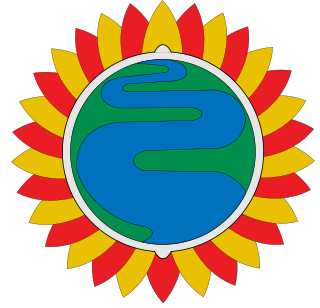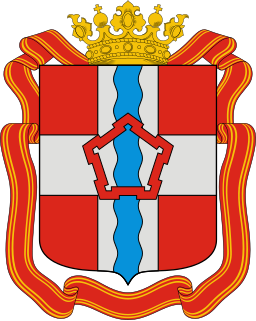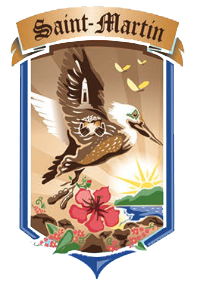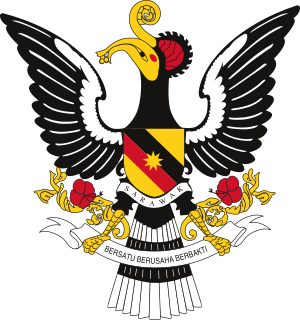 W
WThe coat of arms of the Amazonas was officially adopted by means of the Departmental Assembly Ordinance 020 of March 2, 1995. The coat of arms of Amazonas is also featured as a charge in the centre of the upper band of the Flag of Amazonas.
 W
WThe coat of arms of Bolívar State is divided horizontally into two fields in blue and gold. The blue color in the upper part symbolizes the sky, while the gold in the lower part signifies the auriferous riches of the Guayana Region. In the upper part of the blue field forming an arch are eight stars representing the seven provinces that were considered in 1811 to declare the National Independence with the eighth star symbolizing the Guayana Province.
 W
WThe coat of arms of Groningen is an official symbol of the province. It was designed when the region was united in 1595 and formally approved in 1947 by Queen Wilhelmina. The coat of arms consists of two lions supporting a crowned shield which is decorated with the shields of the city of Groningen and of the Ommelanden.
 W
WThe flag and the coat of arms of Kelantan are state symbols of Kelantan, Malaysia. Like the flag of Kedah, the Kelantanese flag is red with a single charge from Kelantan's coat of arms, albeit partially.
 W
WThe Coat of arms of Kurdistan Region is an eagle holding a sun on his wings and used by Kurdistan Region. The sun is formed of the three colors of red, yellow and green, which represent the Flag of Kurdistan.
 W
WThe coat of arms of Magdalena is the official coat of arms of the Colombian department of Magdalena. It was officially adopted by the Departmental Assembly out of the winning design presented by native painter Álvaro Corvacho.
 W
WThe Coat of arms of Malacca is the official emblem of the Malaysian state of Malacca. The various colours on the arms indicate that the state is part of Malaysia. The star and crescent, which stand on the crest represents Islam, the official religion of the state.
 W
WCoat of arms of Novosibirsk Oblast is the principal official symbol of Novosibirsk Oblast, Russia.
 W
WThe coat of arms is a symbol of the Omsk Oblast, Russia adopted 29 May 2003. Its authors are Igor Vahitov, Albert Karimov and Oleg Nikitin.
 W
WThe civic coat of arms of Penang is largely based on the coat of arms of Penang first granted to the Settlement of Penang, then in the Federation of Malaya, by a Royal Warrant of King George VI dated 11 September 1949.
 W
WThe coat of arms of Perak contains the coat of arms of the DYMM Sultan Perak, Malaysia. The coat of arms is circled with a crescent that contains flowers of rice.
 W
WThe coat of arms of Sabah is the official coat of arms of the Malaysian state of Sabah.
 W
WThere are various logos and emblems used by the Territorial Council of Saint Martin, one of which is a logo contains the name "Saint-Martin", with "Caraïbe Française" and "French Caribbean" written in small text below. A blue ribbon depicts the stylized letter "S", while a green ribbon depicts a stylized "M".
 W
WThe coat of arms of Sarawak is the official coat of arms of the Malaysian state of Sarawak.
 W
WZazpiak Bat is a heraldic nickname for the Basque coat of arms which includes the arms of the seven provinces mentioned, stressing their unity. It was designed by the historian Jean de Jaurgain in 1897 for the Congrès et Fêtes de la Tradition basque celebrated at Saint-Jean-de-Luz.